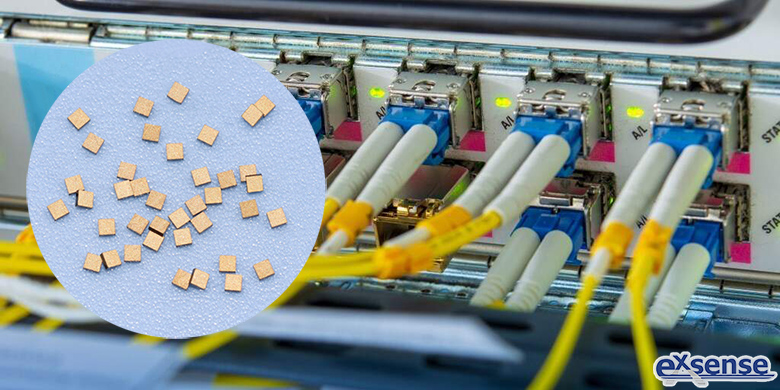
In recent years, the demand for optical transceiver has been continuously expanded as operators have made efforts to build 5G base stations. EXSENSE Electronics Technology Co., Ltd. focuses on research and development, production of NTC chip for optical transceiver has been 13 years, our company is committed to providing customers with high-precision, high-sensitivity, rapid-response thermistor chip. In 2019, China has built more than 130,000 5G base stations, this year is the first year of large-scale construction of 5G base stations, mainly covering urban areas. This year, 5G network construction will focus more on SA networking, its commercial value is higher. With China Broadcast Network becoming a new entry, the 700MHZ 5G base station front-haul and middle-haul jointly built with China Mobile are expected to further expand capacity.
Optical transceiver is the basic component of 5G network physical layer, which is widely used in wireless and transmission equipment. 5G network is mainly composed of three main parts, namely Access Network, Carrier Network, Core Network. Its cost in the system equipment share is increasing, some equipment even more than 50 to 70%, which is the key elements of low cost, wide coverage of 5G. Compared with 4G, 5G network construction puts forward new requirements for optical transceiver. 5G wireless access network (RAN) is re-divided into sections of Active Antenna Unit (AAU), Distribution Unit (DU) and Centralized Unit (CU). In the base station on the wireless side, the front-haul optical transceiver between AAU and DU will be upgraded from 10G to 25G, adding to the demand for the middle-haul optical transceiver between DU and CU. Assuming that a DU hosts a base station with 3 AAUs per base station and a pair of sending and receiving interfaces per AAU, 5G front-haul will bring at least 30 million scale requirements for 25G optical transceiver.
5G network will be based on SA networking, which needs to build an independent 5G carrier network. 5G carrier network is divided into Backbone Network, Provincial Network and Metropolitan Area Network. In the middle-haul of the carrier network, the demand of the Metropolitan Area Network is upgraded from 10G/40G to 100G, and the Metropolitan Area Network can be further subdivided into the core layer, convergence layer, access layer, different layers of the carrier network through different port rates to provide different capabilities of the middle-haul service, the need for different rates of the medium-backlight module.
Commercial use pf 5G network will drive the construction of large/ultra-large data centers around the world, further driving the demand of optical transceiver market. The large bandwidth, wide connection and low latency of 5G network will greatly improve data traffic and drive the development of downstream industries such as high-definition video, VR and cloud computing, higher requirements are proposed for internal data transmission in data centers.
Cisco predicts that the global Internet data center market will continue to grow, there will be 628 super-sized Internet data centers worldwide by 2021, up nearly 1.9 times from 338 in 2016. Cisco predicts that the global cloud computing volume will grow from 3,850EB in 2016 to 14,078EB in 2021. Flattening new data centers increases the need for optical modules, the transformation of the data center architecture from a traditional "three-tier convergence" to a "two-tier leaf ridge architecture" will transform the data center from a vertical (north-south) traffic-based to a horizontal (east-west) build that meets the data center's east-west traffic needs while accelerating scale-out within the data center.
The global data center enters the 400G era, requiring optical transceiver to develop at high speed and over long distances. The trend of large-scale data center leads to the increase of transmission distance demand, and the transmission distance of multi-mode fiber is limited by the increase of signal rate, which is expected to be gradually replaced by single-mode fiber. The construction of large data centers will promote the upgrading of optical module industry products, and the demand of high-end optical module industry is expected to increase.



